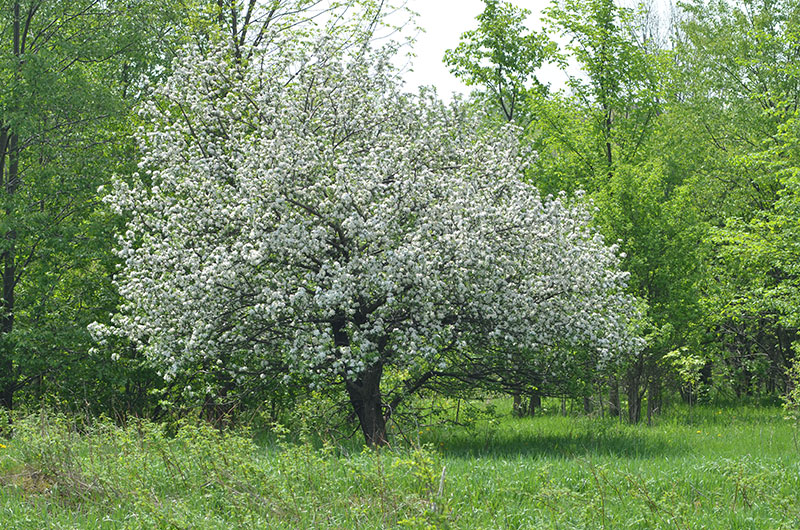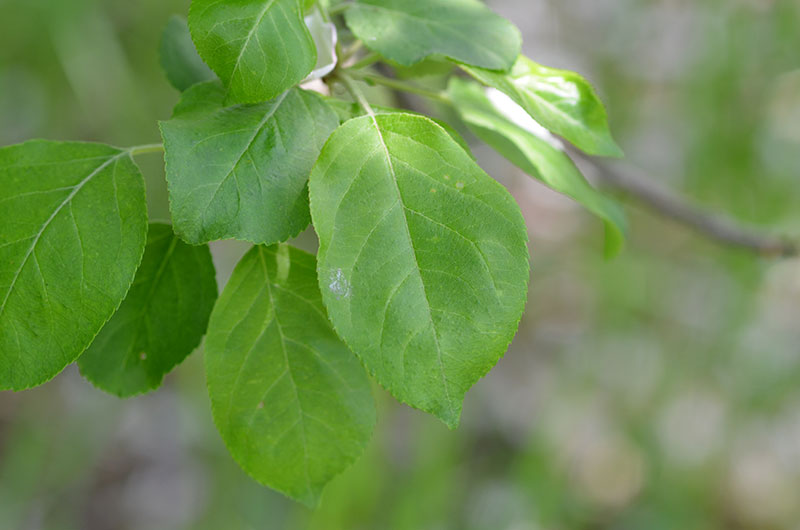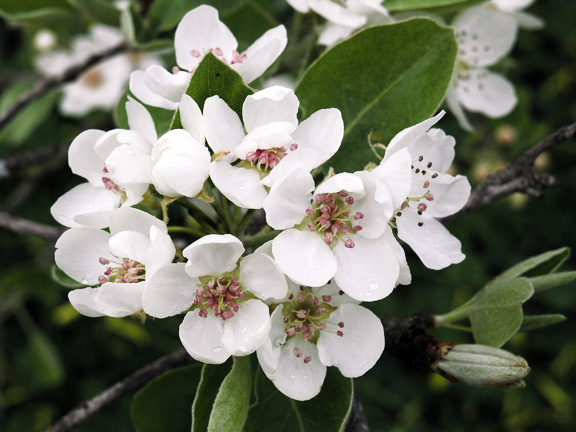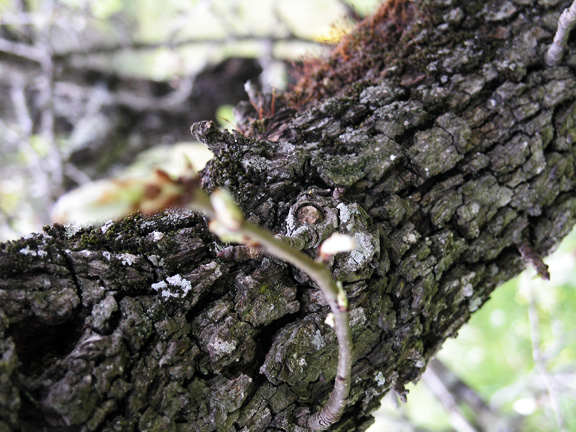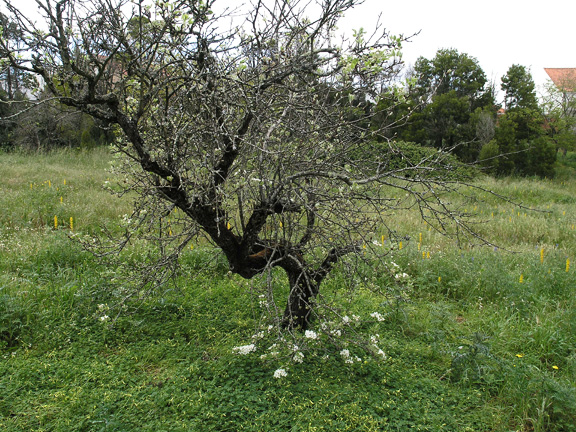| General Description | It is a deciduous small tree with clusters of white flowers in the spring. It has varying colours of pome fruit. Seeds are small, black and slightly poisonous. The plant is of shapely form, with green leaves; and white autumn foliage. |
| ID Characteristic | Has varying coloured edible fruits. Leaves are simple and alternate with serrated edges. This plant has a shapely form; and rough, grey bark. It also has clusters of five-petal, white flowers with a pink under-side. |
| Shape | It has a broad spreading, and a densely twiggy crown. |
| Landscape | The domestic apple is the parent of all commercial apple cultivars produced today. In 2010, 69.9 million metric tons of apples where harvested commercially. The tree can be used in hedgerows, ornamentally or grown for its fruit. The small tree is very tolerant to cold temperatures and thrives well in cool, moist microclimates. |
| Propagation | The domestic apple is not commonly self-fertile, and requires a different tree as a pollinator to set good crops. Generally domestic apple cultivars are propagated through grafting. Grafting occurs in the winter when both scion and rootstock are dormant. Summer budding is also another technique used to propagate desirable cultivars with very little use today for the parent plant M. xdomestica. |
| Cultivation | It may be grown in full sun to partial shade in moist conditions preferring well-drained, loamy type soils. It will tolerate poor soil conditions but size and quality of the fruit is diminished. It is a frost hardy species and responds well to pruning in winter and improved cultivation practices such as fertilizer. |
| Pests | Prone to bacterial and fungal diseases such as mildew, fireblight, apple scab, and insects such as aphids. |
| Habitat | The domestic apple likes well drained, moist areas and is often found growing in orchards, fields and open areas. |
| Bark/Stem Description | Bark is a grey-brown colour with a thick, scaly, rough texture. The twigs of the tree vary from a grey to reddish colour. |
| Flower/Leaf Bud Description | Small glabrous red buds, often tomentose, to about .5 cm. |
| Leaf Description | The dark green, simple, alternate, leaves are oval shaped, are 3-10 cm in length with a serrated margin and a lighter green underside. |
| Flower Description | The flowers, emerging in the spring, are white with a red-pink underside. They are cup-shaped with five petals, ranging in size from 8-10cm. Each flower has many red stamens, copious amounts of pollen and are perfect in form. |
| Fruit Description | The fruit is edible and fleshy; and can be 12-15 cm in diameter. The pome has a five-chambered core, with small, black seeds that are slightly poisonous. The fruit colour varies from yellow, green and red in colour and have a sweet, juicy taste. |
| Colour Description | It has dark green foliage during the growing season and light yellow to brown autumn colour which is not outstanding, but contrast’s with its dark grey bark. |
| Texture Description | Both summer and winter texture of the plant is course. |
